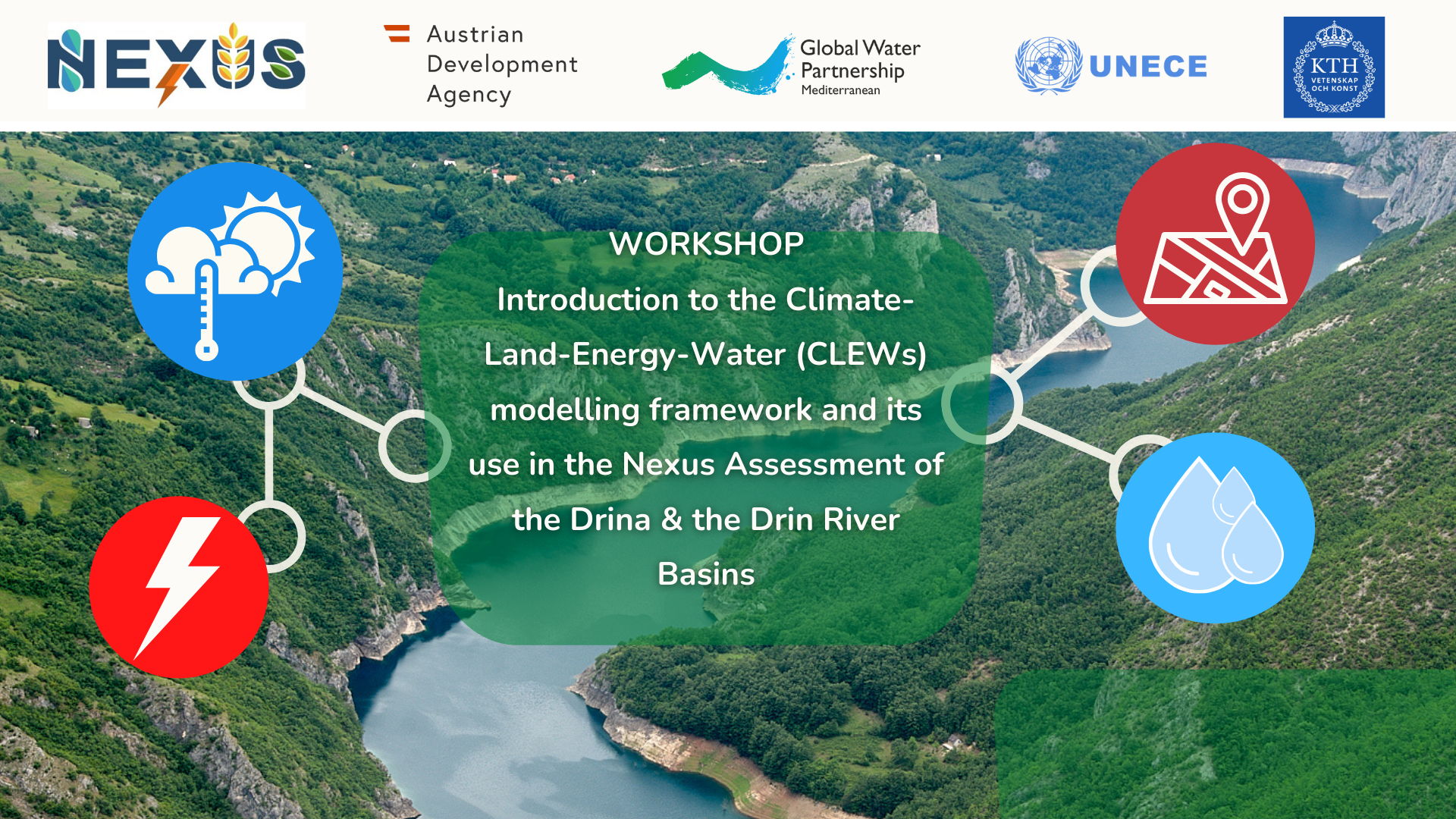The Drin workshop gathered experts from institutions across the basin, including the Ministry of Infrastructure and Energy of Albania, the Transmission System Operator of Albania (OST), the Albanian Power Corporation (KESH), JSC Power Plants of North Macedonia and GIZ Albania. In the Drina workshop, experts from institutions across the basin joined the workshop, including the Ministry of Foreign Trade and Economic Relations of Bosnia and Herzegovina, Elektroprivreda Republike Srpske, JP Elektroprivreda BiH and Elektroprivreda Crne Gore AD Nikšić – EPCG in Montenegro.
Both workshops were hosted by GWP-Med and delivered by experts from KTH Royal Institute of Technology, in Sweden. They were carried out in the framework of the SEE Nexus project funded by the Austrian Development Agency (ADA) and implemented by GWP-Med and UNECE.
Common Methodology for both Drin and Drina
The workshops were set up as a training, aiming to develop capacities of local experts in the application of Nexus methodologies to capture the links between climate, land, energy and water systems and their use in the Drin and the Drina River Basins.
Activities during the first day focused on developing a common understanding on the scope of Nexus assessment methodologies, their potential uses and their application in the Nexus Assessment of the respective basin. Main discussions between the participants revolved around how the insights from nexus assessments can be used by institutions, especially those involved in water-energy infrastructure planning and investments. They then dived into how the results of scenario analyses can be affected by input assumptions and the key role of accurate and up to date set of data and open-source tools in the development of high-quality assessments.
The second day provided the participants with hands-on experience on the creation of a simple and generic water-energy systems model with an open-source integrated resource assessment framework (the Open Source integrated Modelling System) which was used for the integrated water-energy modelling analyses under the Nexus Assessments of the Drin and the Drina River Basins. The aim was to provide the participants with the tools, information and essential skills for reproducing the above analysis in both respective basins autonomously within their institutions, thus fostering the auditability, transparency and long-term sustainability of the analysis.
Key take-away messages for the CLEWs Nexus methodology in the Drin and the Drina River Basins.
Drin River Basin key take-away messages:
As an outcome of the learning activities, participants at the Drin River Basin agreed that the CLEWs Nexus methodology, if used in the planning phase at national and local level, can address challenges of resource competition in water uses between the energy, public water supply and agricultural sectors. It can also foster cooperation in the energy sector between all stakeholders in the region, in balancing the waters for electricity production and flood protection. The openness of the methodology is key to its auditability and transfer to local stakeholders.
Drina River Basin key take-away messages:
As an outcome of the learning activities, the participants identified the CLEWs Nexus methodology as a useful base for better decisions and cross-border cooperation across the domains of water, energy and land use planning, if all aspects are carefully considered in the analyses. The openness of the methodology is key to its auditability and transfer to local stakeholders.
The presentations given during the Workshops are available in the right-hand boxes on this page.
For further interest, a free and open-access course on the Climate-Land use-Energy-Water nexus assessment methodology is available on the Open Learn platform. The course has a duration of approximately 40 hours and the trainee can take it at own pace. In the course, the trainees are taken through theoretical concepts of general validity on nexus assessment methodologies. They then apply the concepts through hands-on exercises that lead them in short time to the creation of a simple country-wide integrated resource assessment model with an open-source tool.
For the entire workshop on the Drin basin see here and for Drina see here.
The SEE Nexus Project (“Promoting the Sustainable Management of Natural Resources in Southeastern Europe, through the use of the Nexus Approach”) is funded by the Austrian Development Agency (ADA), the operational unit of Austrian Development Cooperation and is implemented by Global Water Partnership-Mediterranean (GWP-Med) in partnership with the United Nations Economic Commission for Europe (UNECE).
